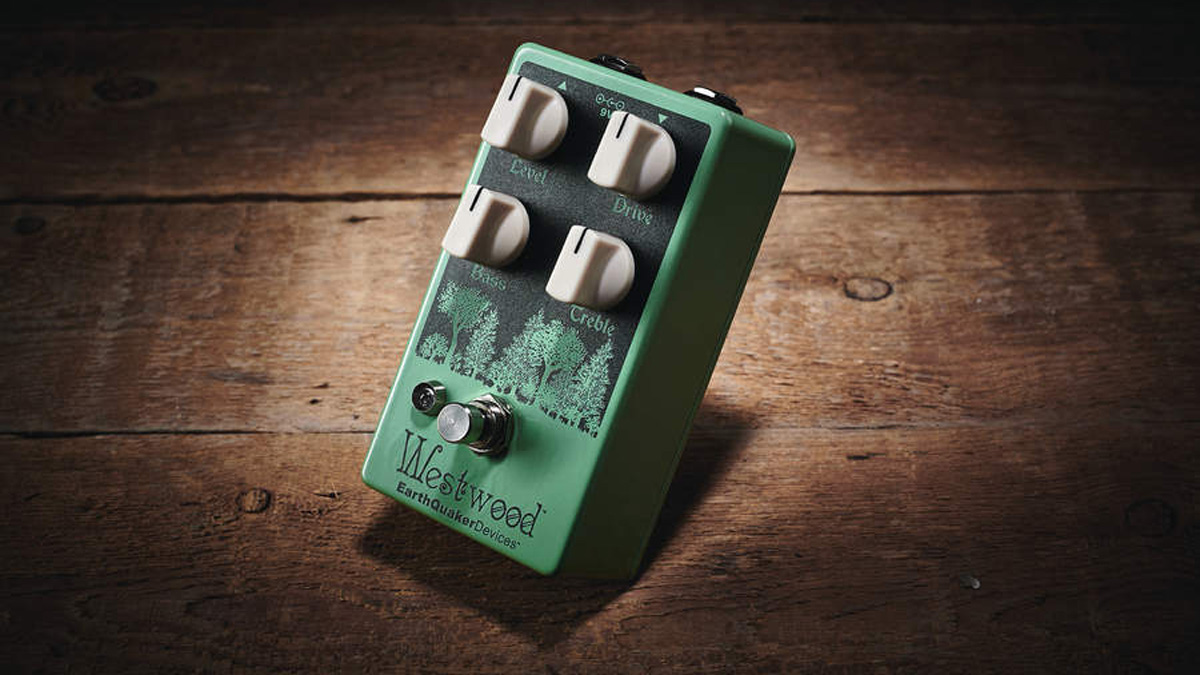MusicRadar Verdict
From clean to saturated overdrive with a range of characterful tones, the Westwood keeps the sound of your guitar wonderfully intact.
Pros
- +
Exceptionally clear and natural sounding overdrive.
- +
Guaranteed for (EarthQuaker Devices’) life.
Cons
- -
The power LED is way too bright.
- -
Engineers will probably want to shelve off your low-end in a mix.
MusicRadar's got your back
Following up from last year’s Data Corruptor (which firmly put the ‘mental’ in experimental), the Westwood is, fundamentally, a back-to-basics dirt pedal, although it’s far more than just an ordinary overdrive.
EarthQuaker Devices’ Founder, Jamie Stillman, told us the pedal “was sort of like an experiment that I made for me.”
Inspired by the tonal clarity and definition imparted by using a BBE Sonic Stomp Sonic Maximiser into a Music Man HD-130 amp, Jamie set about building an overdrive that would, similarly, restore the signal definition and harmonic content lost by guitar amplifier speakers due to amplitude and phase distortion.
In the studio, this is often achieved using exciters and enhancers as cleaner alternatives to the ‘shotgun effect’ of artificially boosting EQ across a much broader area than necessary. With this in mind, the controls have been carefully dialled in, creating an overdrive pedal that’s equally effective as a clean boost.
Sounds
Achieving clarity and crunch simultaneously can seem counter-intuitive; often there’s some sort of payoff with respect to note separation and definition. However, it is immediately apparent the Westwood achieves its aim of enhancing signal transparency extremely well; strumming through a full open E to begin with, the unique timbre of each string cuts through easily, followed by an interesting dynamic sustain as the sparkling high-end crossfades into a mean low-end growl.
The essential flavour of the overdrive is incredibly natural and amp-like using flat Bass and Treble settings, with a pleasing tubular, flute-like quality. Boosting the Treble level gives additional presence and mid-range honk, which may be handy to compensate for muddy humbuckers, for example, while cutting easily mellows things down enough to tame a particularly spiky amp.
Boosting the Bass level into more extreme areas progressed the sound from mildly assertive to a palpable thump reminiscent of the low-end jolt heard in Metallica’s notorious ...And Justice For All guitar mix, while extreme Treble settings created an interesting lo-fi AM radio sound.
Want all the hottest music and gear news, reviews, deals, features and more, direct to your inbox? Sign up here.
Rod Brakes is a music journalist with an expertise in guitars. Having spent many years at the coalface as a guitar dealer and tech, Rod's more recent work as a writer covering artists, industry pros and gear includes contributions for leading publications and websites such as Guitarist, Total Guitar, Guitar World, Guitar Player and MusicRadar in addition to specialist music books, blogs and social media. He is also a lifelong musician.

